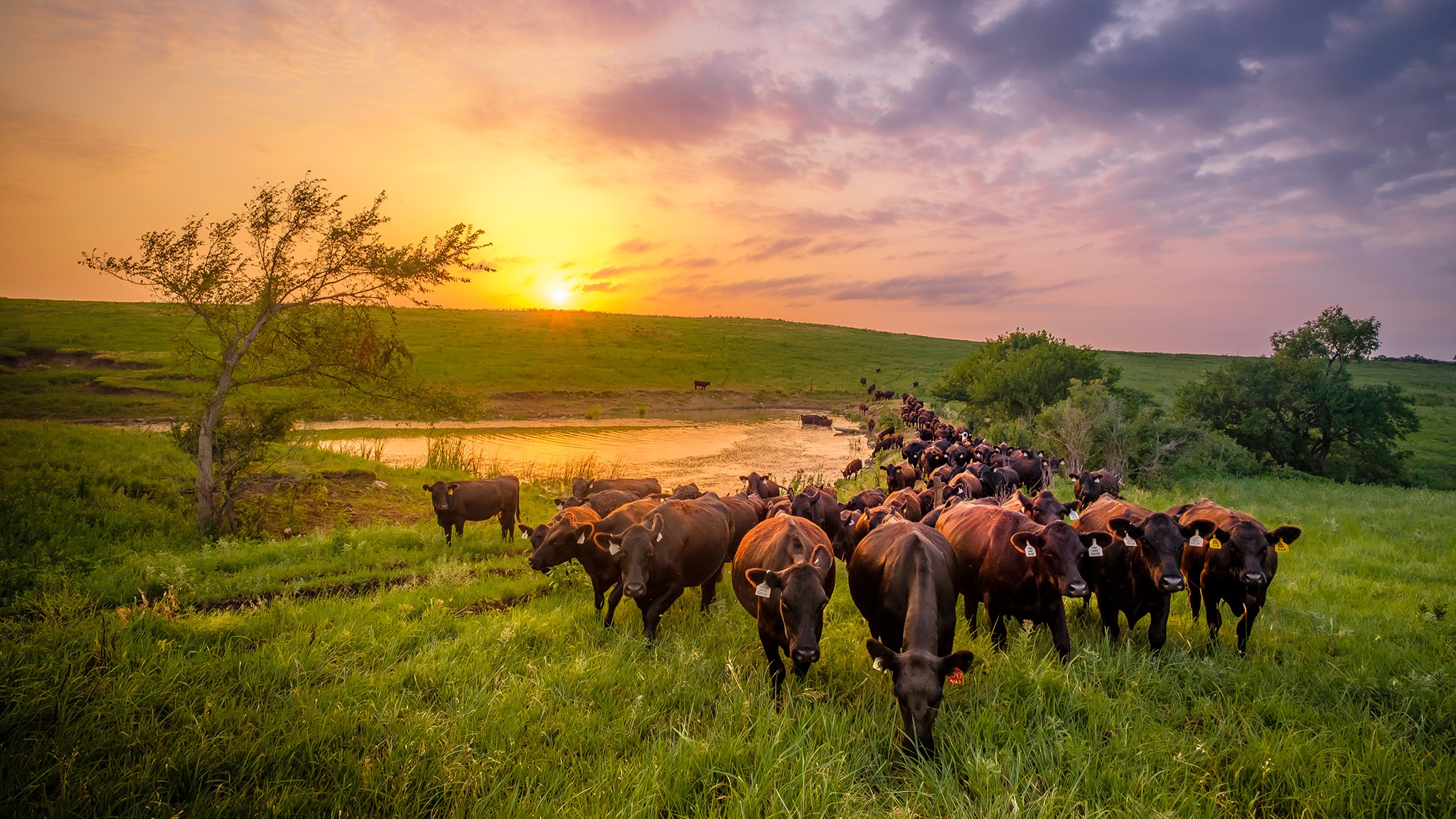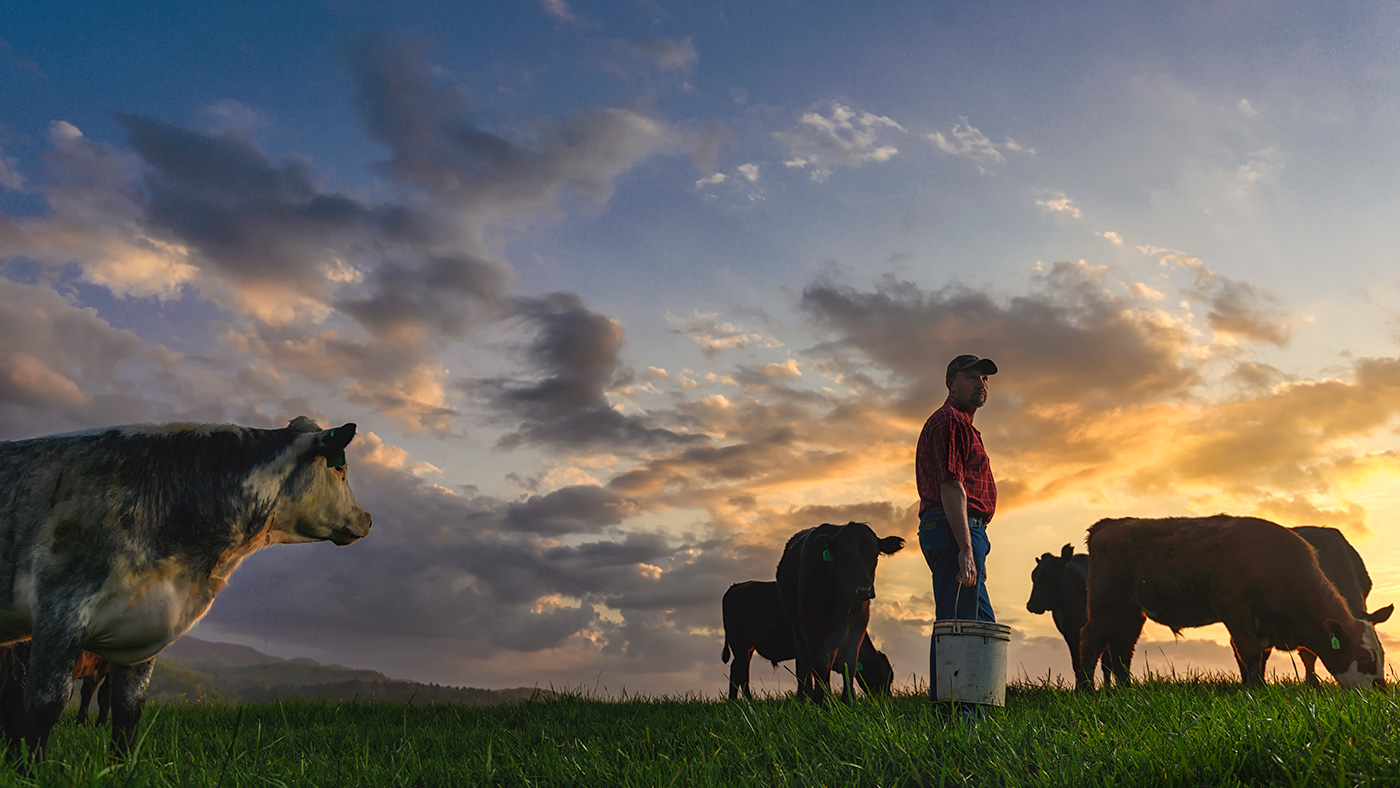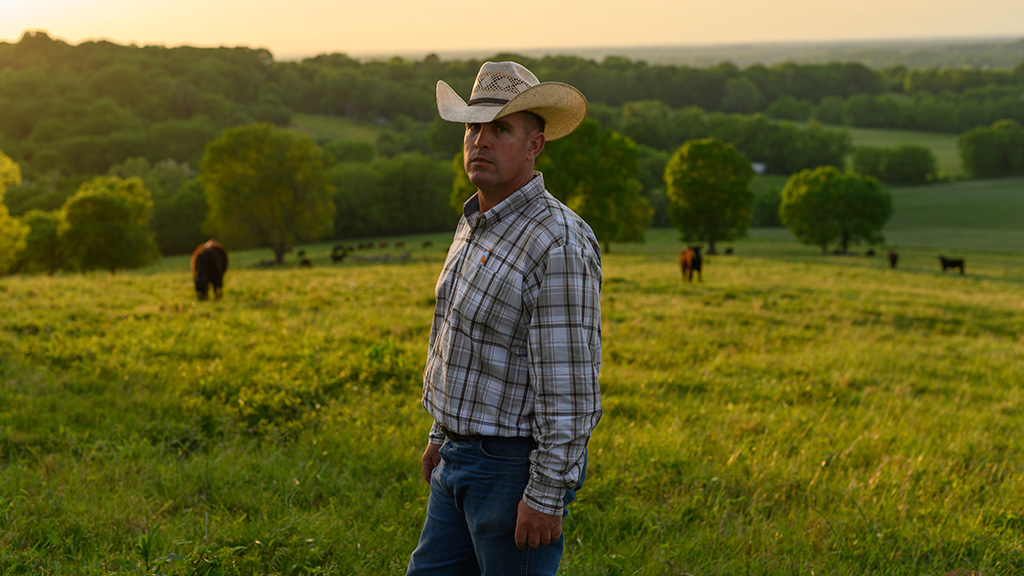ruminants are key to a sustainable future
Cattle are beneficial in a sustainable food system because of their unique stomach structure, which allows them to eat and digest what we as humans can’t. In addition to the grasses they graze on for most of their lives, they can eat numerous other byproducts from plant-based food production, such as brewers grains, pea pulp, beet tops, potato peelings and sunflower hulls, which are all byproducts of human activities or other products, such as pea-protein burgers and meat crumbles. Instead of going to a landfill, cattle eat these “waste” products and turn them into a high-quality protein edible for human consumption.
Cattle also graze in areas where it’s impossible to grow crops, like the Flint Hills of Kansas or the arid land of Nevada, taking those grasses and turning them into high quality protein, in places that could otherwise never be used to feed a growing population.
BEEF AND GHG EMISSIONS
Many plant-based food advocates promote Meatless Mondays and vegan diets to reduce greenhouse gas emissions and lower their carbon footprint. However, research has demonstrated that removing all livestock and poultry from the U.S. food system would only reduce global greenhouse gas emissions by only 0.36 percent.1 And further, if all Americans participated in Meatless Monday, U.S. greenhouse gas emissions would perhaps be reduced by 0.37 percent.1 Removing beef from the diet would remove a high quality protein from diets, both in the U.S. and around the world.
The bottom line is that beef is nourishing and sustainable, 2, 3 and most people are already eating beef within global dietary guidelines1. So, what can we all do to help make our diets healthier and more sustainable? There are three big opportunities that can make the biggest difference: waste less food, eat a balanced diet and improve the productivity of agriculture globally.
- White, RR, Hall MB. Nutritional and greenhouse gas impacts of removing animals from US agriculture. Proc Natl Acad Sci U S A. 2017 Nov 28;114(48):E10301-E10308.
- United States. Department of Health and Human Services., United States. Department of Agriculture., United States. Dietary Guidelines Advisory Committee. Dietary guidelines for Americans, 2015-2020. Eighth edition. ed. Washington, D.C.: U.S. Department of Health and Human Services and U.S. Department of Agriculture; 2015. https://www.cdc.gov/nchs/data/hestat/obesity_adult_07_08/obesity_adult_07_08.pdf
- US Department of Agriculture, Agricultural Research Service, Nutrient Data Laboratory. USDA National Nutrient Database for Standard Reference, Legacy. Version Current: April 2018. Internet: /nea/bhnrc/ndl




